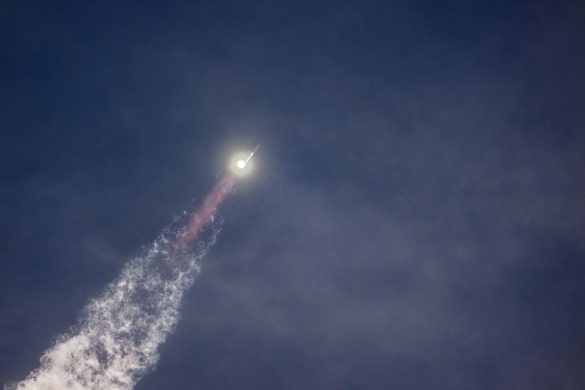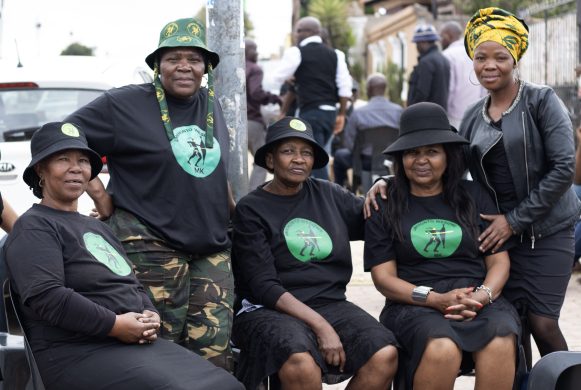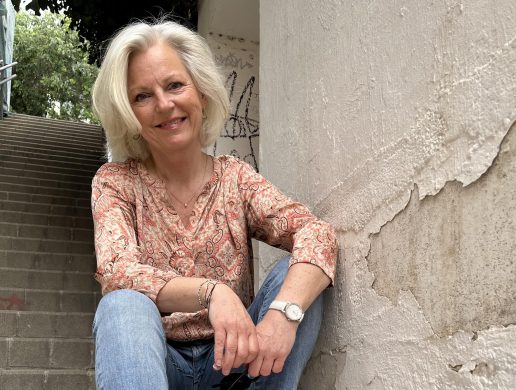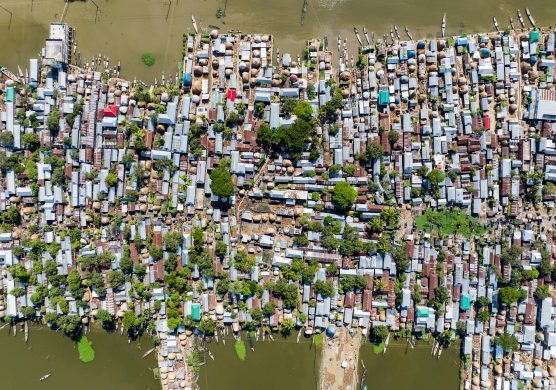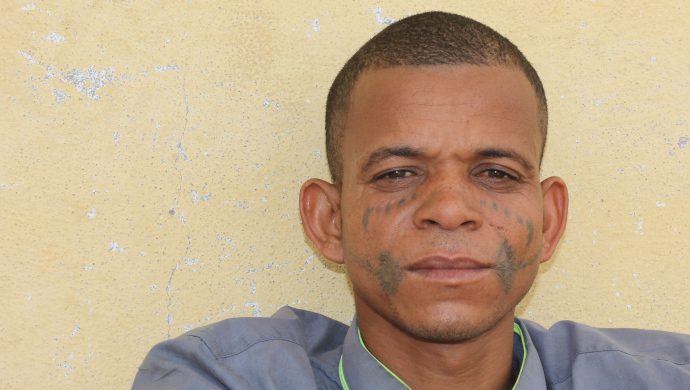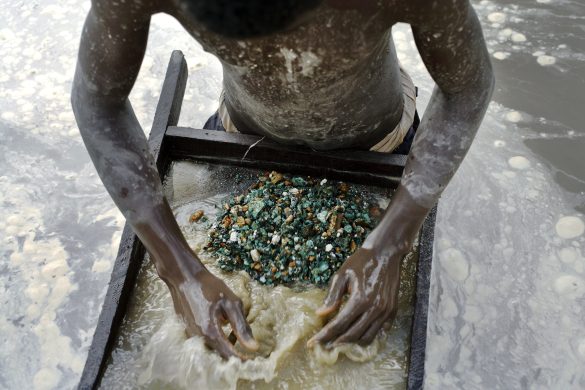Den globale udviklingsbistand faldt i 2012 for andet år i træk og det går især ud over de fattigste lande, som får en mindre del af hjælpen, mens de “rigere”u-lande får mere – samtidig markant fald i bistanden til Afrika syd for Sahara, noterer de vestlige landes samarbejdsorganisation, OECD, i årsoversigt.
PARIS, 3. April 2013: Development aid fell by four per cent in real terms in 2012, following a two per cent fall in 2011, writes OECD in a press release Wednesday.
The continuing financial crisis and euro zone turmoil has led several governments to tighten their budgets, which has had a direct impact on aid to poor countries. There is also a noticeable shift in aid away from the poorest countries and towards middle-income countries.
However, on the basis of the DAC Survey on Donors’ Forward Spending Plans, a moderate recovery in aid levels is expected in 2013.
OECD Secretary-General Angel Gurría expressed concern over this trend:
“It is worrying that budgetary duress our member countries have led to a second successive fall in total aid, but I take heart from the fact that, in spite of the crisis, nine countries still managed to increase their aid”.
“As we approach the 2015 deadline for achieving the Millennium Development Goals (2015 Målene), I hope that the trend in aid away from the poorest countries will be reversed. This is essential if aid is to play its part in helping achieve the Goals.”
Nøgletal for 2012
In 2012, members of the Development Assistance Committee (DAC) of the OECD provided 125,7 billion US dollar in net official development assistance (ODA = statslig udviklingsbistand), representing 0,29 per cent of their combined gross national income (GNI = bruttonationalindkomst).
This was a four per cent drop in real terms compared to 2011.
Since 2010, the year it reached its peak, ODA has fallen by six per cent in real terms.
Excluding 2007, which saw the end of exceptional debt relief operations, the fall in 2012 is the largest since 1997. It is also the first time since 1996-97 that aid has fallen in two successive years.
The financial crisis and euro zone turmoil led many governments to implement austerity measures and reduce their aid budgets. However, despite the current fiscal pressures, some countries maintained or increased their ODA budgets in order to reach the targets they had set.
The new DAC Chairman, (norske, red) Erik Solheim, observed that the DAC would continue to encourage its members to live up to their commitments:
“I welcome the efforts of those nine DAC members that increased their aid in 2012, and urge others to increase their aid as soon as their budget circumstances allow”, said Mr Solheim.
“Maintaining aid is not impossible even in today’s fiscal climate. The UK’s 2013-14 budget increases its aid to 0,7 per cent of national income, which gives hope that we can reverse the falling trend”, noted he.
Bistanden går andre veje
Data for 2012 show that although total net ODA fell, aid for core bilateral projects and programmes (i.e. excluding debt relief grants and humanitarian aid) rose by two per cent in real terms; by contrast core contributions to multilateral institutions fell by 7,1 per cent.
Bilateral aid to sub-Saharan Africa stood at 26,2 billion dollar, representing a fall of 7,9 per cent in real terms compared to 2011.
Aid to the African continent as a whole fell by 9,9 per cent to 28,9 billion dollar, following exceptional support to some countries in North Africa after the “Arab Spring” in 2011.
Bilateral net ODA to the group of Least Developed Countries (LDCs) also fell by 12,8 per cent in real terms to about 26 billion dollar.
Bistandsyderne en for en
The largest donors, by volume, were the United States, the United Kingdom, Germany, France and Japan.
Denmark, Luxembourg, the Netherlands, Norway and Sweden continued to exceed the United Nations’ ODA target of 0,7 per cent of GNI.
Net ODA rose in real terms in nine countries, with the largest increases recorded in Australia, Austria, Iceland (which joined the DAC in 2013), South Korea and Luxembourg.
By contrast, it fell in fifteen countries, with the largest cuts recorded in Spain, Italy, Greece and Portugal, the countries most affected by the euro zone crisis.
The G7 countries provided 70 per cent of total net DAC ODA in 2012, and the DAC-EU countries 51 per cent.
USA – stadig størst af alle i beløb
The United States continued to be the largest donor by volume with net ODA flows amounting to 30,5 billion dollar in 2012, representing a fall of 2,8 per cent in real terms compared to 2011.
US ODA as a share of GNI also fell from 0,20 per cent in 2011 to 0,19 per cent in 2012. The fall was mainly due to a reduction in bilateral net debt relief (gældslettelse) from 1,1 billion in 2011 to 56,3 million dollar (representing a single operation with Ivory Coast) in 2012.
However, US contributions to international organisations reached a historic high of 4,9 billion dollar (+30 per cent in real terms compared to 2011).
In 2012, US bilateral aid to sub-Saharan Africa fell to 8,8 billion dollar (-4,5 per cent in real terms compared to 2011); however, excluding debt relief it rose by +7,2 per cent.
Og så alle de andre
ODA from the fifteen EU countries that are DAC members was 63,8 billion dollar in 2012, representing a fall of 7,3 per cent compared to 2011.
As a share of their combined GNI, ODA fell from 0,44 per cent in 2011 to 0,42 per cent in 2012. ODA rose or fell in DAC EU countries as follows:
Austria (+6,1%): due to debt relief operations with sub-Saharan Africa;
Belgium (-13,0%): due to overall cuts in its aid budget;
Denmark (-1,8%): due to a reduction in bilateral grants;
Finland (-0,4%);
France (-1,0%);
Germany (-0,7%): due to reduced contributions to multilateral institutions;
Greece (-17,0%): due to austerity measures;
Ireland (-5,8%): due to fiscal constraints leading to cuts in its aid budget;
Italy (-34,7%): due to lower levels of aid to refugees arriving from North Africa and reduced debt relief grants compared to 2011; however, the Italian government has made a firm commitment to increase ODA allocations in order to reach 0,15-0,16% of GNI in 2013;
Luxembourg (+9,8%): due to an increase in bilateral grants;
Netherlands (-6,6%): due to overall cuts in its aid budget;
Portugal (-13,1%): following the country’s severe fiscal crisis;
Spain (-49,7%): due to unprecedented cuts in its aid in response to the financial crisis;
Sweden (-3,4%): due to reduced contributions to international organisations;
United Kingdom (-2,2%): reflecting firm budget allocations were put into place to ensure that the government spent an ODA volume of 0,56% of GNI in 2012 and 0,7% from 2013 onwards.
In 2012, total net ODA by the 27 EU member states was 65 billion dollar, representing 0,39 per cent of their combined GNI.
Net disbursements (udbetalinger) of concessional development assistance (med stort gaveelement) by EU Institutions to developing countries and multilateral organisations were 17,6 billion dollar, a rise of 8 per cent compared to 2011, due essentially to an increase in loans.
Net ODA rose or fell in other DAC countries as follows:
Australia (+9,1%): to meet its international commitments to scale up aid in order to reach 0,5% ODA/GNI in 2016-17.
Canada (+4,1%): due to an increase in bilateral grants;
Iceland (+5,7%): reflecting the overall scaling up of its aid programme;
Japan (-2,1%): due to a fall in bilateral grants and reduced contributions to international organisations;
Korea (+17,6%): due to the overall scaling up of its aid to achieve an ODA/GNI ratio of 0,25% by 2015;
New Zealand (+3,0%) reflecting the overall scaling up of its aid to reach an ODA level of $NZ 600 million;
Norway (+0,4%);
Switzerland (+4,5%): reflecting the overall scaling up of its aid to reach 0,5% of GNI by 2015.
Other donor countries reported preliminary ODA figures as follows:
Czech Republic (-4,2%): due mainly to lower contributions to the EU;
Estonia (-2,7%);
Hungary (-7,5%): due to a scaling down of its bilateral aid and lower contributions to the EU;
Israel (-10,1%): due to a reduction in bilateral ODA;
Poland (+12,4%): which increased its bilateral ODA;
Slovak Republic (-3,5%);
Slovenia (-2,4%);
Turkey (+98,7%): reflecting help to a large number of refugees arriving from Syria and increased support to North African countries following the Arab Spring;
United Arab Emirates (30,6%): due to the overall scaling up of its bilateral aid.
In 2012, DAC countries’ gross (brutto) ODA (i.e. without deducting (fratræk af) loan repayments) was 138,2 billion dollar, down by five per cent in real terms compared to 2011.
The largest donors on a gross basis were the United States, Japan, Germany, the United Kingdom and France.
Fremtidsudsigter
The most recent DAC Survey on Donors’ Forward Spending Plans provides estimates of future aid for all DAC members and major non-DAC and multilateral donors up to 2016. It predicts gross receipts by developing countries of COUNTRY PROGRAMMABLE AID (CPA).
CPA rose one per cent in real terms in 2012, with falls from DAC countries outweighed by increases from non-DAC and multilateral donors.
CPA is projected to increase by 9 per cent in real terms in 2013, mainly due to planned increases by Australia, Germany, Italy, Switzerland and United Kingdom, and in soft loans from multilateral agencies (e.g. IDA, the World Bank’s soft lending window, and IFAD).
Total CPA is then expected to remain stable over the years 2014 to 2016.
The Survey suggests a shift in aid towards middle-income countries in the Far East and South and Central Asia, primarily China, India, Indonesia, Pakistan, Sri Lanka, Uzbekistan and Vietnam, and it is most likely that the increase will be in the form of soft loans.
By contrast, CPA is likely to stagnate to countries with the largest MDG gaps and poverty levels, including sub Saharan African countries such as Burundi, Chad, Madagascar, Malawi and Niger, which are also identified as potentially under-aided countries.
As part of its transparency efforts, the OECD will publish country level data on CPA as submitted by several donors.
Se også graf m.v. på
http://www.oecd.org/dac/stats/aidtopoorcountriesslipsfurtherasgovernmentstightenbudgets.htm
OECD’s statistik findes på http://www.oecd.org/dac/stats


